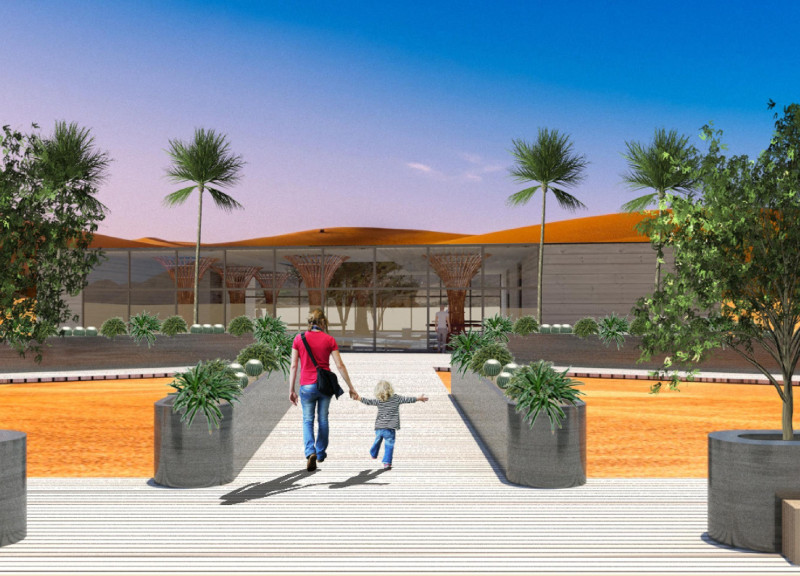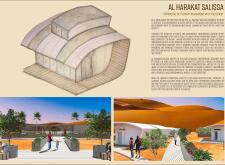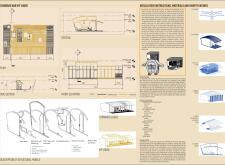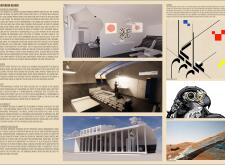5 key facts about this project
Al Harakat Salissa is an architectural project designed for an ephemeral settlement within a desert landscape, emphasizing sustainability and adaptability. The project integrates modern amenities while respecting the surrounding ecosystem, creating a unique living experience that bridges traditional and contemporary design practices.
The settlement serves multiple functions, including residential, social, and recreational spaces, promoting interaction among residents and fostering a sense of community. The design comprises modular lodging units organized around a central hub, providing shared amenities such as kitchens, lounges, and gathering areas.
Unique Design Approaches
One notable aspect of Al Harakat Salissa is its modular construction, allowing units to be easily assembled and disassembled. This flexibility ensures minimal environmental impact and accommodates the temporary nature of the settlement. The architectural design mimics traditional tent structures, incorporating large glass windows for natural light and sweeping views of the desert landscape. Sustainable materials, such as rammed earth and aluminum, are utilized not only for their durability but also for their ability to enhance energy efficiency.
Incorporating passive cooling methods and renewable energy sources, the project minimizes reliance on mechanical systems. Its layout promotes natural ventilation, optimizing indoor climate control in response to the desert climate. The selection of native vegetation within the landscaping design supports local biodiversity and enhances the aesthetic value of the community.
Sustainable Material Selection
The use of specific materials is key to the project's environmental strategy. Aluminum provides structural integrity while remaining lightweight, and polycarbonate glazing allows for transparency and thermal regulation. Rammed earth walls contribute to thermal mass, effectively stabilizing indoor temperatures. Wood adds warmth to interiors, and the integration of solar panels emphasizes the settlement's commitment to renewable energy.
The project’s design reflects a cohesive blend of form and function, addressing both the needs of its inhabitants and the unique challenges posed by the desert environment. By prioritizing sustainability and community interaction, Al Harakat Salissa offers a contemporary approach to desert living.
To gain a deeper understanding of this architectural project, readers are encouraged to explore the architectural plans, architectural sections, and architectural designs presented, which provide further insights into the innovative ideas that underpin this settlement.






















































